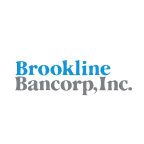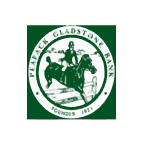WSBC

WesBanco, Inc.
WSBC
(3.2)32,04 USD
0.8% ROA
5.25% ROE
12.7x PER
1.946.399.396,00 USD
73.1% DER
4.95% Yield
15.4% NPM
WesBanco, Inc. Stock Analysis
WesBanco, Inc. Fundamental Analysis
Fundamental analysis in stock investing is like studying the foundation of a house before buying it. It involves looking at a company's financial health, like its earnings, assets, and debts, to determine if it's a good investment based on its fundamental strength and potential for growth.
| # | Analysis | Rating |
|---|---|---|
| 1 |
PBV
The stock's low PBV ratio (0.67x) suggests it's undervalued, making it an attractive opportunity for investors. |
|
| 2 |
Assets Growth
With continuous growth in revenue over the last five years, this company has proven to be a lucrative investment option, showcasing its strong financial performance. |
|
| 3 |
Dividend Growth
Investors can be encouraged by the company's strong dividend growth over the past five years, highlighting its ability to generate consistent returns and provide an attractive investment opportunity. |
|
| 4 |
Dividend
The company's consistent dividend payouts over the past five years exemplify its strong commitment to providing shareholders with reliable returns, making it an attractive investment option. |
|
| 5 |
ROE
The stock's ROE falls within an average range (7.18%), demonstrating satisfactory profitability and efficiency in utilizing shareholders' equity. |
|
| 6 |
ROA
The stock's ROA (1.09%) indicates that it's doing well in making money from the things it owns. This makes it a good option to invest and make consistent profits. |
|
| 7 |
DER
The stock has a reasonable amount of debt compared to its ownership (62%), suggesting a balanced financial position and a moderate level of risk. |
|
| 8 |
Graham Number
The company's Graham number suggests that its stock price is underestimated, implying that it may present a compelling investment opportunity. |
|
| 9 |
Buffet Intrinsic Value
Warren Buffett's formula suggests that the company's stock is undervalued (102), making it an appealing investment prospect with its intrinsic value surpassing the current market price. |
|
| 10 |
Revenue Growth
Company's revenue has remained stagnant over the past three years, indicating a lack of growth and making it a less favorable option. |
|
| 11 |
Net Profit Growth
Over the past five years, this company's net profit has failed to exhibit any growth, indicating a stagnant financial performance and making it a less favorable choice for potential investors. |
WesBanco, Inc. Technical Analysis
Technical analysis in stock investing is like reading the patterns on a weather map to predict future weather conditions. It involves studying past stock price movements and trading volumes to make predictions about where a stock's price might go next, without necessarily looking at the company's financial health.
| # | Analysis | Recommendation |
|---|---|---|
| 1 | Awesome Oscillator | Buy |
| 2 | MACD | Buy |
| 3 | RSI | Hold |
| 4 | Stoch RSI | Sell |
WesBanco, Inc. Price Chart
Financial Statements
Financial statements are like report cards for companies. They show how much money a company makes (income statement), what it owns and owes (balance sheet), and where it spends its money (cash flow statement), helping stock investors understand if a company is healthy and worth investing in.
Income Statements
An income statement for a company is like a scoreboard for its profits and losses. It shows how much money the company made (revenue) and how much it spent to make that money (expenses), helping stock investors see if a company is making a profit or not.
Revenue in stock investing is the total amount of money a company earns from its sales, and it's a key factor that investors consider to assess a company's financial performance and growth potential.
| Year | Revenue | Growth |
|---|---|---|
| 1987 | 0 | |
| 1988 | 0 | 0% |
| 1989 | 31.400.000 | 100% |
| 1990 | 32.800.000 | 4.27% |
| 1991 | 39.200.000 | 16.33% |
| 1992 | 48.200.000 | 18.67% |
| 1993 | 51.100.000 | 5.68% |
| 1994 | 67.200.000 | 23.96% |
| 1995 | 67.100.000 | -0.15% |
| 1996 | 77.000.000 | 12.86% |
| 1997 | 83.500.000 | 7.78% |
| 1998 | 114.500.000 | 27.07% |
| 1999 | 111.200.000 | -2.97% |
| 2000 | 106.903.000 | -4.02% |
| 2001 | 112.173.000 | 4.7% |
| 2002 | 131.452.000 | 14.67% |
| 2003 | 136.234.000 | 3.51% |
| 2004 | 144.765.000 | 5.89% |
| 2005 | 171.444.000 | 15.56% |
| 2006 | 163.241.000 | -5.03% |
| 2007 | 172.252.000 | 5.23% |
| 2008 | 217.883.000 | 20.94% |
| 2009 | 222.961.000 | 2.28% |
| 2010 | 225.691.000 | 1.21% |
| 2011 | 229.253.000 | 1.55% |
| 2012 | 233.126.000 | 1.66% |
| 2013 | 254.772.000 | 8.5% |
| 2014 | 261.732.000 | 2.66% |
| 2015 | 311.453.000 | 15.96% |
| 2016 | 334.829.000 | 6.98% |
| 2017 | 379.135.000 | 11.69% |
| 2018 | 447.512.000 | 15.28% |
| 2019 | 516.620.000 | 13.38% |
| 2020 | 607.665.000 | 14.98% |
| 2021 | 590.718.000 | -2.87% |
| 2022 | 591.704.000 | 0.17% |
| 2023 | 594.244.000 | 0.43% |
| 2023 | 594.694.000 | 0.08% |
| 2024 | 936.768.000 | 36.52% |
Research and Development Expenses are the costs a company incurs to create and improve its products or services, which can be important for investors to evaluate a company's innovation and potential for future growth.
| Year | Research and Development Expenses | Growth |
|---|---|---|
| 1987 | 0 | |
| 1988 | 0 | 0% |
| 1989 | 0 | 0% |
| 1990 | 0 | 0% |
| 1991 | 0 | 0% |
| 1992 | 0 | 0% |
| 1993 | 0 | 0% |
| 1994 | 0 | 0% |
| 1995 | 0 | 0% |
| 1996 | 0 | 0% |
| 1997 | 0 | 0% |
| 1998 | 0 | 0% |
| 1999 | 0 | 0% |
| 2000 | 0 | 0% |
| 2001 | 0 | 0% |
| 2002 | 0 | 0% |
| 2003 | 0 | 0% |
| 2004 | 0 | 0% |
| 2005 | 0 | 0% |
| 2006 | 0 | 0% |
| 2007 | 0 | 0% |
| 2008 | 0 | 0% |
| 2009 | 0 | 0% |
| 2010 | 0 | 0% |
| 2011 | 0 | 0% |
| 2012 | 0 | 0% |
| 2013 | 0 | 0% |
| 2014 | 0 | 0% |
| 2015 | 0 | 0% |
| 2016 | 0 | 0% |
| 2017 | 0 | 0% |
| 2018 | 0 | 0% |
| 2019 | 0 | 0% |
| 2020 | 0 | 0% |
| 2021 | 0 | 0% |
| 2022 | 0 | 0% |
| 2023 | 0 | 0% |
| 2023 | 0 | 0% |
| 2024 | 0 | 0% |
General and Administrative Expenses are the costs a company incurs to run its day-to-day operations, such as office rent, salaries, and utilities, which investors consider to understand a company's overall efficiency and management effectiveness.
| Year | General and Administrative Expenses | Growth |
|---|---|---|
| 1987 | 0 | |
| 1988 | 0 | 0% |
| 1989 | 10.200.000 | 100% |
| 1990 | 10.800.000 | 5.56% |
| 1991 | 12.400.000 | 12.9% |
| 1992 | 14.600.000 | 15.07% |
| 1993 | 15.200.000 | 3.95% |
| 1994 | 21.700.000 | 29.95% |
| 1995 | 21.600.000 | -0.46% |
| 1996 | 23.600.000 | 8.47% |
| 1997 | 25.800.000 | 8.53% |
| 1998 | 35.400.000 | 27.12% |
| 1999 | 35.300.000 | -0.28% |
| 2000 | 33.309.000 | -5.98% |
| 2001 | 33.841.000 | 1.57% |
| 2002 | 39.223.000 | 13.72% |
| 2003 | 32.946.000 | -19.05% |
| 2004 | 47.393.000 | 30.48% |
| 2005 | 56.290.000 | 15.81% |
| 2006 | 53.683.000 | -4.86% |
| 2007 | 57.401.000 | 6.48% |
| 2008 | 72.124.000 | 20.41% |
| 2009 | 83.173.000 | 13.28% |
| 2010 | 79.448.000 | -4.69% |
| 2011 | 78.762.000 | -0.87% |
| 2012 | 84.274.000 | 6.54% |
| 2013 | 92.411.000 | 8.81% |
| 2014 | 92.302.000 | -0.12% |
| 2015 | 108.343.000 | 14.81% |
| 2016 | 116.223.000 | 6.78% |
| 2017 | 130.798.000 | 11.14% |
| 2018 | 147.923.000 | 11.58% |
| 2019 | 173.754.000 | 14.87% |
| 2020 | 202.623.000 | 14.25% |
| 2021 | 199.425.000 | -1.6% |
| 2022 | 212.700.000 | 6.24% |
| 2023 | 241.592.000 | 11.96% |
| 2023 | 236.088.000 | -2.33% |
| 2024 | 232.372.000 | -1.6% |
EBITDA stands for Earnings Before Interest, Taxes, Depreciation, and Amortization. It is a measure that helps stock investors analyze a company's profitability by looking at its earnings without considering certain expenses. This helps to get a clearer picture of the company's financial performance and its ability to generate cash flow.
| Year | EBITDA | Growth |
|---|---|---|
| 1987 | 6.100.000 | |
| 1988 | 7.600.000 | 19.74% |
| 1989 | 0 | 0% |
| 1990 | 0 | 0% |
| 1991 | 0 | 0% |
| 1992 | 0 | 0% |
| 1993 | 0 | 0% |
| 1994 | 0 | 0% |
| 1995 | 0 | 0% |
| 1996 | 0 | 0% |
| 1997 | 0 | 0% |
| 1998 | 0 | 0% |
| 1999 | 0 | 0% |
| 2000 | 0 | 0% |
| 2001 | 0 | 0% |
| 2002 | 0 | 0% |
| 2003 | 0 | 0% |
| 2004 | 55.993.000 | 100% |
| 2005 | 0 | 0% |
| 2006 | 0 | 0% |
| 2007 | 0 | 0% |
| 2008 | 0 | 0% |
| 2009 | 0 | 0% |
| 2010 | 0 | 0% |
| 2011 | 0 | 0% |
| 2012 | 0 | 0% |
| 2013 | 93.954.000 | 100% |
| 2014 | 103.000.000 | 8.78% |
| 2015 | 120.435.000 | 14.48% |
| 2016 | 239.706.000 | 49.76% |
| 2017 | 281.374.000 | 14.81% |
| 2018 | 358.868.000 | 21.59% |
| 2019 | 415.535.000 | 13.64% |
| 2020 | 464.572.000 | 10.56% |
| 2021 | 406.272.000 | -14.35% |
| 2022 | 440.004.000 | 7.67% |
| 2023 | 186.228.000 | -136.27% |
| 2023 | 0 | 0% |
| 2024 | -47.612.000 | 100% |
Gross profit is the money a company makes from selling its products or services after subtracting the cost of producing or providing them, and it is an important measure for investors to understand a company's profitability.
| Year | Gross Profit | Growth |
|---|---|---|
| 1987 | 0 | |
| 1988 | 0 | 0% |
| 1989 | 31.400.000 | 100% |
| 1990 | 32.800.000 | 4.27% |
| 1991 | 39.200.000 | 16.33% |
| 1992 | 48.200.000 | 18.67% |
| 1993 | 51.100.000 | 5.68% |
| 1994 | 67.200.000 | 23.96% |
| 1995 | 67.100.000 | -0.15% |
| 1996 | 77.000.000 | 12.86% |
| 1997 | 83.500.000 | 7.78% |
| 1998 | 114.500.000 | 27.07% |
| 1999 | 111.200.000 | -2.97% |
| 2000 | 106.903.000 | -4.02% |
| 2001 | 112.173.000 | 4.7% |
| 2002 | 131.452.000 | 14.67% |
| 2003 | 136.234.000 | 3.51% |
| 2004 | 117.545.000 | -15.9% |
| 2005 | 138.559.000 | 15.17% |
| 2006 | 134.339.000 | -3.14% |
| 2007 | 141.834.000 | 5.28% |
| 2008 | 182.236.000 | 22.17% |
| 2009 | 187.500.000 | 2.81% |
| 2010 | 191.720.000 | 2.2% |
| 2011 | 195.272.000 | 1.82% |
| 2012 | 197.679.000 | 1.22% |
| 2013 | 217.435.000 | 9.09% |
| 2014 | 224.536.000 | 3.16% |
| 2015 | 272.566.000 | 17.62% |
| 2016 | 293.829.000 | 7.24% |
| 2017 | 333.805.000 | 11.98% |
| 2018 | 396.791.000 | 15.87% |
| 2019 | 453.964.000 | 12.59% |
| 2020 | 536.917.000 | 15.45% |
| 2021 | 520.657.000 | -3.12% |
| 2022 | 527.387.000 | 1.28% |
| 2023 | 529.264.000 | 0.35% |
| 2023 | 526.880.000 | -0.45% |
| 2024 | 859.516.000 | 38.7% |
Net income in stock investing is like the money a company actually gets to keep as profit after paying all its bills, and it's an important measure to understand how well a company is doing financially.
| Year | Net Profit | Growth |
|---|---|---|
| 1987 | 6.100.000 | |
| 1988 | 7.600.000 | 19.74% |
| 1989 | 8.500.000 | 10.59% |
| 1990 | 8.900.000 | 4.49% |
| 1991 | 9.900.000 | 10.1% |
| 1992 | 12.300.000 | 19.51% |
| 1993 | 14.700.000 | 16.33% |
| 1994 | 15.700.000 | 6.37% |
| 1995 | 18.200.000 | 13.74% |
| 1996 | 21.200.000 | 14.15% |
| 1997 | 22.300.000 | 4.93% |
| 1998 | 28.300.000 | 21.2% |
| 1999 | 27.600.000 | -2.54% |
| 2000 | 26.924.000 | -2.51% |
| 2001 | 29.002.000 | 7.17% |
| 2002 | 34.826.000 | 16.72% |
| 2003 | 36.130.000 | 3.61% |
| 2004 | 38.182.000 | 5.37% |
| 2005 | 42.757.000 | 10.7% |
| 2006 | 39.035.000 | -9.54% |
| 2007 | 44.669.000 | 12.61% |
| 2008 | 38.117.000 | -17.19% |
| 2009 | 23.933.000 | -59.27% |
| 2010 | 35.611.000 | 32.79% |
| 2011 | 43.809.000 | 18.71% |
| 2012 | 49.544.000 | 11.58% |
| 2013 | 63.925.000 | 22.5% |
| 2014 | 69.974.000 | 8.64% |
| 2015 | 80.762.000 | 13.36% |
| 2016 | 86.635.000 | 6.78% |
| 2017 | 94.482.000 | 8.31% |
| 2018 | 143.112.000 | 33.98% |
| 2019 | 158.873.000 | 9.92% |
| 2020 | 122.044.000 | -30.18% |
| 2021 | 242.260.000 | 49.62% |
| 2022 | 192.113.000 | -26.1% |
| 2023 | 147.368.000 | -30.36% |
| 2023 | 159.032.000 | 7.33% |
| 2024 | 115.664.000 | -37.49% |
EPS, or earnings per share, is a measure that shows how much profit a company has earned for each outstanding share of its stock, and it is important for stock investors as it helps understand the profitability of a company and compare it with other companies in the market.
| Year | Earning per Share (EPS) | Growth |
|---|---|---|
| 1987 | 1 | |
| 1988 | 1 | 100% |
| 1989 | 1 | 0% |
| 1990 | 1 | 0% |
| 1991 | 1 | 0% |
| 1992 | 1 | 0% |
| 1993 | 1 | 0% |
| 1994 | 1 | 0% |
| 1995 | 1 | 0% |
| 1996 | 1 | 0% |
| 1997 | 1 | 0% |
| 1998 | 1 | 0% |
| 1999 | 1 | 0% |
| 2000 | 1 | 0% |
| 2001 | 2 | 0% |
| 2002 | 2 | 0% |
| 2003 | 2 | 0% |
| 2004 | 2 | 0% |
| 2005 | 2 | 0% |
| 2006 | 2 | 0% |
| 2007 | 2 | 50% |
| 2008 | 1 | -100% |
| 2009 | 1 | 0% |
| 2010 | 1 | 100% |
| 2011 | 2 | 0% |
| 2012 | 2 | 0% |
| 2013 | 2 | 50% |
| 2014 | 2 | 0% |
| 2015 | 2 | 0% |
| 2016 | 2 | 0% |
| 2017 | 2 | 0% |
| 2018 | 3 | 0% |
| 2019 | 3 | 0% |
| 2020 | 2 | -100% |
| 2021 | 4 | 66.67% |
| 2022 | 3 | 0% |
| 2023 | 2 | -50% |
| 2023 | 3 | 0% |
| 2024 | 2 | -100% |
Cashflow Statements
Cashflow statements show the movement of money in and out of a company, helping stock investors understand how much money a company makes and spends. By examining cashflow statements, investors can assess if a company is generating enough cash to pay its bills, invest in growth, and provide returns to stockholders.
Free cash flow is the leftover cash that a company generates after covering its operating expenses and capital expenditures, which is important for stock investors as it shows how much money a company has available to invest in growth, pay dividends, or reduce debt.
| Year | Free Cashflow | Growth |
|---|---|---|
| 1989 | 9.500.000 | |
| 1990 | 14.000.000 | 32.14% |
| 1991 | 10.700.000 | -30.84% |
| 1992 | 15.600.000 | 31.41% |
| 1993 | 108.200.000 | 85.58% |
| 1994 | 24.700.000 | -338.06% |
| 1995 | 17.900.000 | -37.99% |
| 1996 | 20.100.000 | 10.95% |
| 1997 | 29.900.000 | 32.78% |
| 1998 | 21.500.000 | -39.07% |
| 1999 | 21.700.000 | 0.92% |
| 2000 | 36.274.000 | 40.18% |
| 2001 | 34.481.000 | -5.2% |
| 2002 | 43.291.000 | 20.35% |
| 2003 | 52.382.000 | 17.36% |
| 2004 | 42.801.000 | -22.38% |
| 2005 | 36.361.000 | -17.71% |
| 2006 | 67.610.000 | 46.22% |
| 2007 | 49.248.000 | -37.28% |
| 2008 | 57.644.000 | 14.57% |
| 2009 | 38.787.000 | -48.62% |
| 2010 | 101.373.000 | 61.74% |
| 2011 | 106.186.000 | 4.53% |
| 2012 | 70.845.000 | -49.88% |
| 2013 | 102.635.000 | 30.97% |
| 2014 | 87.434.000 | -17.39% |
| 2015 | 79.074.000 | -10.57% |
| 2016 | 121.636.000 | 34.99% |
| 2017 | 135.591.000 | 10.29% |
| 2018 | 186.888.000 | 27.45% |
| 2019 | 151.162.000 | -23.63% |
| 2020 | 52.055.000 | -190.39% |
| 2021 | 327.762.000 | 84.12% |
| 2022 | 196.150.000 | -67.1% |
| 2023 | 146.816.000 | -33.6% |
| 2023 | 2.262.000 | -6390.54% |
| 2024 | 19.060.000 | 88.13% |
Operating cash flow represents the cash generated or consumed by a company's day-to-day operations, excluding external investing or financing activities, and is crucial for stock investors as it shows how much cash a company is generating from its core business operations.
| Year | Operating Cashflow | Growth |
|---|---|---|
| 1989 | 10.300.000 | |
| 1990 | 14.700.000 | 29.93% |
| 1991 | 11.800.000 | -24.58% |
| 1992 | 17.000.000 | 30.59% |
| 1993 | 109.800.000 | 84.52% |
| 1994 | 26.200.000 | -319.08% |
| 1995 | 21.100.000 | -24.17% |
| 1996 | 26.100.000 | 19.16% |
| 1997 | 34.700.000 | 24.78% |
| 1998 | 30.500.000 | -13.77% |
| 1999 | 31.900.000 | 4.39% |
| 2000 | 38.494.000 | 17.13% |
| 2001 | 36.688.000 | -4.92% |
| 2002 | 47.429.000 | 22.65% |
| 2003 | 55.630.000 | 14.74% |
| 2004 | 47.768.000 | -16.46% |
| 2005 | 44.853.000 | -6.5% |
| 2006 | 73.290.000 | 38.8% |
| 2007 | 58.634.000 | -25% |
| 2008 | 64.782.000 | 9.49% |
| 2009 | 41.434.000 | -56.35% |
| 2010 | 104.068.000 | 60.19% |
| 2011 | 108.700.000 | 4.26% |
| 2012 | 76.815.000 | -41.51% |
| 2013 | 111.480.000 | 31.1% |
| 2014 | 94.808.000 | -17.59% |
| 2015 | 88.649.000 | -6.95% |
| 2016 | 123.697.000 | 28.33% |
| 2017 | 141.626.000 | 12.66% |
| 2018 | 191.557.000 | 26.07% |
| 2019 | 163.363.000 | -17.26% |
| 2020 | 59.606.000 | -174.07% |
| 2021 | 336.297.000 | 82.28% |
| 2022 | 204.140.000 | -64.74% |
| 2023 | 169.322.000 | -20.56% |
| 2023 | 2.262.000 | -7385.5% |
| 2024 | 18.194.000 | 87.57% |
Capex, short for capital expenditures, refers to the money a company spends on acquiring or upgrading tangible assets like buildings, equipment, or technology, which is important for stock investors as it indicates how much a company is investing in its infrastructure to support future growth and profitability.
| Year | Capital Expenditure | Growth |
|---|---|---|
| 1989 | 800.000 | |
| 1990 | 700.000 | -14.29% |
| 1991 | 1.100.000 | 36.36% |
| 1992 | 1.400.000 | 21.43% |
| 1993 | 1.600.000 | 12.5% |
| 1994 | 1.500.000 | -6.67% |
| 1995 | 3.200.000 | 53.13% |
| 1996 | 6.000.000 | 46.67% |
| 1997 | 4.800.000 | -25% |
| 1998 | 9.000.000 | 46.67% |
| 1999 | 10.200.000 | 11.76% |
| 2000 | 2.220.000 | -359.46% |
| 2001 | 2.207.000 | -0.59% |
| 2002 | 4.138.000 | 46.67% |
| 2003 | 3.248.000 | -27.4% |
| 2004 | 4.967.000 | 34.61% |
| 2005 | 8.492.000 | 41.51% |
| 2006 | 5.680.000 | -49.51% |
| 2007 | 9.386.000 | 39.48% |
| 2008 | 7.138.000 | -31.49% |
| 2009 | 2.647.000 | -169.66% |
| 2010 | 2.695.000 | 1.78% |
| 2011 | 2.514.000 | -7.2% |
| 2012 | 5.970.000 | 57.89% |
| 2013 | 8.845.000 | 32.5% |
| 2014 | 7.374.000 | -19.95% |
| 2015 | 9.575.000 | 22.99% |
| 2016 | 2.061.000 | -364.58% |
| 2017 | 6.035.000 | 65.85% |
| 2018 | 4.669.000 | -29.26% |
| 2019 | 12.201.000 | 61.73% |
| 2020 | 7.551.000 | -61.58% |
| 2021 | 8.535.000 | 11.53% |
| 2022 | 7.990.000 | -6.82% |
| 2023 | 22.506.000 | 64.5% |
| 2023 | 0 | 0% |
| 2024 | -866.000 | 100% |
Balance Sheet
Balance sheets provide a snapshot of a company's financial health and its assets (such as cash, inventory, and property) and liabilities (like debts and obligations) at a specific point in time. For stock investors, balance sheets help assess the company's overall worth and evaluate its ability to meet financial obligations and support future growth.
Equity refers to the ownership interest or stake that shareholders have in a company, representing their claim on its assets and earnings after all debts and liabilities are paid.
| Year | Equity | Growth |
|---|---|---|
| 1989 | 70.400.000 | |
| 1990 | 76.100.000 | 7.49% |
| 1991 | 92.400.000 | 17.64% |
| 1992 | 117.000.000 | 21.03% |
| 1993 | 125.200.000 | 6.55% |
| 1994 | 158.500.000 | 21.01% |
| 1995 | 170.000.000 | 6.76% |
| 1996 | 227.500.000 | 25.27% |
| 1997 | 249.600.000 | 8.85% |
| 1998 | 296.500.000 | 15.82% |
| 1999 | 269.700.000 | -9.94% |
| 2000 | 258.506.000 | -4.33% |
| 2001 | 258.201.000 | -0.12% |
| 2002 | 337.821.000 | 23.57% |
| 2003 | 318.436.000 | -6.09% |
| 2004 | 370.181.000 | 13.98% |
| 2005 | 415.230.000 | 10.85% |
| 2006 | 416.875.000 | 0.39% |
| 2007 | 580.319.000 | 28.16% |
| 2008 | 659.371.000 | 11.99% |
| 2009 | 588.716.000 | -12% |
| 2010 | 606.863.000 | 2.99% |
| 2011 | 633.790.000 | 4.25% |
| 2012 | 714.184.000 | 11.26% |
| 2013 | 746.595.000 | 4.34% |
| 2014 | 788.190.000 | 5.28% |
| 2015 | 1.122.132.000 | 29.76% |
| 2016 | 1.341.408.000 | 16.35% |
| 2017 | 1.395.321.000 | 3.86% |
| 2018 | 1.978.827.000 | 29.49% |
| 2019 | 2.593.921.000 | 23.71% |
| 2020 | 2.756.737.000 | 5.91% |
| 2021 | 2.693.166.000 | -2.36% |
| 2022 | 2.426.662.000 | -10.98% |
| 2023 | 2.447.941.000 | 0.87% |
| 2023 | 2.533.062.000 | 3.36% |
| 2024 | 2.544.279.000 | 0.44% |
Assets represent the valuable resources that a company owns, such as cash, inventory, property, and equipment, and understanding a company's assets helps investors assess its value and potential for generating future profits.
| Year | Assets | Growth |
|---|---|---|
| 1989 | 659.800.000 | |
| 1990 | 714.700.000 | 7.68% |
| 1991 | 824.700.000 | 13.34% |
| 1992 | 1.010.100.000 | 18.35% |
| 1993 | 1.038.900.000 | 2.77% |
| 1994 | 1.351.000.000 | 23.1% |
| 1995 | 1.371.800.000 | 1.52% |
| 1996 | 1.677.800.000 | 18.24% |
| 1997 | 1.789.300.000 | 6.23% |
| 1998 | 2.242.700.000 | 20.22% |
| 1999 | 2.269.700.000 | 1.19% |
| 2000 | 2.310.137.000 | 1.75% |
| 2001 | 2.474.454.000 | 6.64% |
| 2002 | 3.297.231.000 | 24.95% |
| 2003 | 3.445.006.000 | 4.29% |
| 2004 | 4.011.399.000 | 14.12% |
| 2005 | 4.422.115.000 | 9.29% |
| 2006 | 4.098.143.000 | -7.91% |
| 2007 | 5.384.326.000 | 23.89% |
| 2008 | 5.222.041.000 | -3.11% |
| 2009 | 5.397.352.000 | 3.25% |
| 2010 | 5.361.458.000 | -0.67% |
| 2011 | 5.536.030.000 | 3.15% |
| 2012 | 6.078.717.000 | 8.93% |
| 2013 | 6.144.773.000 | 1.07% |
| 2014 | 6.296.565.000 | 2.41% |
| 2015 | 8.470.298.000 | 25.66% |
| 2016 | 9.790.877.000 | 13.49% |
| 2017 | 9.816.178.000 | 0.26% |
| 2018 | 12.458.632.000 | 21.21% |
| 2019 | 15.720.112.000 | 20.75% |
| 2020 | 16.425.610.000 | 4.3% |
| 2021 | 16.927.125.000 | 2.96% |
| 2022 | 16.931.905.000 | 0.03% |
| 2023 | 17.344.377.000 | 2.38% |
| 2023 | 17.712.374.000 | 2.08% |
| 2024 | 18.128.375.000 | 2.29% |
Liabilities refer to the financial obligations or debts that a company owes to creditors or external parties, and understanding a company's liabilities is important for investors as it helps assess the company's financial risk and ability to meet its obligations.
| Year | Liabilities | Growth |
|---|---|---|
| 1989 | 589.400.000 | |
| 1990 | 638.600.000 | 7.7% |
| 1991 | 732.300.000 | 12.8% |
| 1992 | 893.100.000 | 18% |
| 1993 | 913.700.000 | 2.25% |
| 1994 | 1.192.500.000 | 23.38% |
| 1995 | 1.201.800.000 | 0.77% |
| 1996 | 1.450.300.000 | 17.13% |
| 1997 | 1.539.700.000 | 5.81% |
| 1998 | 1.946.200.000 | 20.89% |
| 1999 | 2.000.000.000 | 2.69% |
| 2000 | 2.051.631.000 | 2.52% |
| 2001 | 2.216.253.000 | 7.43% |
| 2002 | 2.959.410.000 | 25.11% |
| 2003 | 3.126.570.000 | 5.35% |
| 2004 | 3.641.218.000 | 14.13% |
| 2005 | 4.006.885.000 | 9.13% |
| 2006 | 3.681.268.000 | -8.85% |
| 2007 | 4.804.007.000 | 23.37% |
| 2008 | 4.562.670.000 | -5.29% |
| 2009 | 4.808.636.000 | 5.12% |
| 2010 | 4.754.595.000 | -1.14% |
| 2011 | 4.902.240.000 | 3.01% |
| 2012 | 5.364.533.000 | 8.62% |
| 2013 | 5.398.178.000 | 0.62% |
| 2014 | 5.508.375.000 | 2% |
| 2015 | 7.348.166.000 | 25.04% |
| 2016 | 8.449.469.000 | 13.03% |
| 2017 | 8.420.857.000 | -0.34% |
| 2018 | 10.479.805.000 | 19.65% |
| 2019 | 13.126.191.000 | 20.16% |
| 2020 | 13.668.873.000 | 3.97% |
| 2021 | 14.233.959.000 | 3.97% |
| 2022 | 14.505.243.000 | 1.87% |
| 2023 | 14.896.436.000 | 2.63% |
| 2023 | 15.179.312.000 | 1.86% |
| 2024 | 15.584.096.000 | 2.6% |
WesBanco, Inc. Financial Ratio (TTM)
Valuation Metrics
- Revenue per Share
- 13.83
- Net Income per Share
- 2.29
- Price to Earning Ratio
- 12.7x
- Price To Sales Ratio
- 2.36x
- POCF Ratio
- 8.92
- PFCF Ratio
- 10.42
- Price to Book Ratio
- 0.68
- EV to Sales
- 4.03
- EV Over EBITDA
- 115.16
- EV to Operating CashFlow
- 17.09
- EV to FreeCashFlow
- 17.78
- Earnings Yield
- 0.08
- FreeCashFlow Yield
- 0.1
- Market Cap
- 1,95 Bil.
- Enterprise Value
- 3,32 Bil.
- Graham Number
- 46.95
- Graham NetNet
- -216.53
Income Statement Metrics
- Net Income per Share
- 2.29
- Income Quality
- 1.42
- ROE
- 0.05
- Return On Assets
- 0.01
- Return On Capital Employed
- 0.06
- Net Income per EBT
- 0.82
- EBT Per Ebit
- 0.23
- Ebit per Revenue
- 0.82
- Effective Tax Rate
- 0.18
Margins
- Sales, General, & Administrative to Revenue
- 0.43
- Research & Developement to Revenue
- 0
- Stock Based Compensation to Revenue
- 0.02
- Gross Profit Margin
- 0.92
- Operating Profit Margin
- 0.82
- Pretax Profit Margin
- 0.19
- Net Profit Margin
- 0.15
Dividends
- Dividend Yield
- 0.05
- Dividend Yield %
- 4.95
- Payout Ratio
- 0.69
- Dividend Per Share
- 1.44
Operating Metrics
- Operating Cashflow per Share
- 3.26
- Free CashFlow per Share
- 3.14
- Capex to Operating CashFlow
- 0.04
- Capex to Revenue
- 0.01
- Capex to Depreciation
- 0.86
- Return on Invested Capital
- 0.11
- Return on Tangible Assets
- 0.01
- Days Sales Outstanding
- 35.36
- Days Payables Outstanding
- 78.26
- Days of Inventory on Hand
- 478.22
- Receivables Turnover
- 10.32
- Payables Turnover
- 4.66
- Inventory Turnover
- 0.76
- Capex per Share
- 0.13
Balance Sheet
- Cash per Share
- 43,50
- Book Value per Share
- 42,75
- Tangible Book Value per Share
- 23.79
- Shareholders Equity per Share
- 42.75
- Interest Debt per Share
- 35.51
- Debt to Equity
- 0.73
- Debt to Assets
- 0.1
- Net Debt to EBITDA
- 47.64
- Current Ratio
- 0.09
- Tangible Asset Value
- 1,42 Bil.
- Net Current Asset Value
- -15,02 Bil.
- Invested Capital
- -4312448000
- Working Capital
- -5,66 Bil.
- Intangibles to Total Assets
- 0.06
- Average Receivables
- 0,08 Bil.
- Average Payables
- 0,02 Bil.
- Average Inventory
- -61723500
- Debt to Market Cap
- 0.96
Dividends
Dividends in stock investing are like rewards that companies give to their shareholders. They are a portion of the company's profits distributed to investors, typically in the form of cash payments, as a way for them to share in the company's success.
| Year | Dividends | Growth |
|---|---|---|
| 1987 | 1 | |
| 1988 | 1 | 100% |
| 1989 | 1 | 0% |
| 1990 | 1 | 0% |
| 1991 | 1 | 0% |
| 1992 | 1 | 0% |
| 1993 | 1 | 0% |
| 1994 | 1 | 0% |
| 1995 | 1 | 0% |
| 1996 | 1 | 0% |
| 1997 | 1 | 0% |
| 1998 | 1 | 0% |
| 1999 | 1 | 0% |
| 2000 | 1 | 0% |
| 2001 | 1 | 0% |
| 2002 | 1 | 0% |
| 2003 | 1 | 0% |
| 2004 | 1 | 100% |
| 2005 | 1 | 0% |
| 2006 | 1 | 0% |
| 2007 | 1 | 0% |
| 2008 | 1 | 0% |
| 2009 | 1 | 0% |
| 2010 | 1 | 0% |
| 2011 | 1 | 0% |
| 2012 | 1 | 0% |
| 2013 | 1 | 0% |
| 2014 | 1 | 0% |
| 2015 | 1 | 0% |
| 2016 | 1 | 0% |
| 2017 | 1 | 100% |
| 2018 | 1 | 0% |
| 2019 | 1 | 0% |
| 2020 | 1 | 0% |
| 2021 | 1 | 0% |
| 2022 | 1 | 0% |
| 2023 | 1 | 0% |
| 2024 | 1 | 0% |
WesBanco, Inc. Profile
About WesBanco, Inc.
WesBanco, Inc. operates as the bank holding company for WesBanco Bank, Inc. that provides retail banking, corporate banking, personal and corporate trust, brokerage, and mortgage banking and insurance services. It operates in two segments, Community Banking, and Trust and Investment Services. The company offers commercial demand, individual demand, and time deposit accounts; money market accounts; interest bearing and non-interest bearing demand deposits, as well as savings deposits; and certificates of deposit. It also provides commercial real estate loans; commercial and industrial loans; residential real estate loans, including loans to purchase, construct, or refinance borrower's home; home equity lines of credit; installment loans to finance the purchase of automobiles, trucks, motorcycles, boats, and other recreational vehicles, as well as home equity installment loans, unsecured home improvement loans, and revolving lines of credit; and commercial, mortgage, and individual installment loans. In addition, the company offers trust and investment services, as well as various investment products comprising mutual funds and annuities; and securities brokerage services. Further, WesBanco, Inc., through its non-banking subsidiaries, acts as an agency that specializes in property, casualty, life, and title insurance, as well as benefit plan sales and administration to personal and commercial clients; provides broker dealer and discount brokerage services; holds investment securities and loans; and holds and leases commercial real estate properties, as well as acts as an investment adviser to a family of mutual funds. As of December 31, 2021, it operated 206 branches and 203 ATMs in West Virginia, Ohio, western Pennsylvania, Kentucky, southern Indiana, and Maryland, as well as seven loan production offices in West Virginia, Ohio, western Pennsylvania, Maryland, and northern Virginia. WesBanco, Inc. was founded in 1870 and is headquartered in Wheeling, West Virginia.
- CEO
- Mr. Jeffrey H. Jackson
- Employee
- 2.277
- Address
-
1 Bank Plaza
Wheeling, 26003
WesBanco, Inc. Executives & BODs
| # | Name | Age |
|---|---|---|
| 1 |
Mr. John H. Iannone Senior Vice President of Investor & Public Relations |
70 |
| 2 |
Mr. Jayson M. Zatta Senior EVice President, Chief Banking Officer and Group Head of Banking & Trust |
70 |
| 3 |
Mr. Michael L. Perkins CPA Senior EVice President & Chief Risk Officer |
70 |
| 4 |
Mr. Jeffrey H. Jackson President, Chief Executive Officer & Director |
70 |
| 5 |
Ms. Jan Pattishall-Krupinski Senior Executive Vice President & Chief Administrative Officer |
70 |
| 6 |
Ms. Jennifer Sue Roth Chief Compliance Officer |
70 |
| 7 |
Mr. Daniel K. Weiss Jr. Senior Executive Vice President & Chief Financial Officer |
70 |
| 8 |
Mr. Anthony F. Pietranton Senior Executive Vice President and Group Head of Human Resources & Facilities (Leave of Absence) |
70 |
| 9 |
Ms. Kimberly L. Griffith Senior EVice President and Group Head of Human Resources & Facilities |
70 |
| 10 |
Mr. Stephen J. Lawrence Executive Vice President & Chief Internal Auditor |
70 |



















